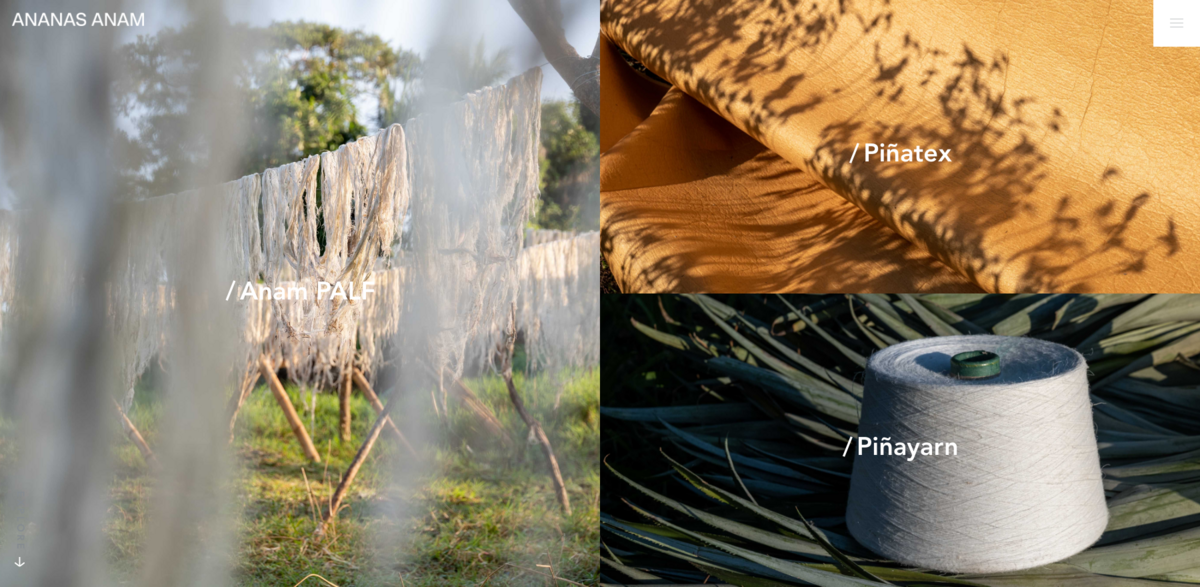What is Ananas Anam?
Ananas Anam is shaking up the textile world with its innovative approach to natural textiles made from waste pineapple leaves. Their standout products, Piñatex® and Piñayarn®, come from the fibre of pineapple plant leaves—yes, the very leaves that are usually tossed aside as agricultural waste after the pineapple harvest. By turning what was once discarded into something valuable, Ananas Anam is pioneering a new way to think about sustainable materials in fashion and beyond.
Main Benefits of Ananas Anam’s Approach
Here’s why this project is making waves:
- Piñatex® and Piñayarn® are made from pineapple leaf fibre, a by-product of existing pineapple farming—no extra land, water, or pesticides needed.
- Each linear meter of Piñatex prevents the release of 12kg of CO2 emissions.
- Each kilo of Piñayarn prevents up to 6kg of CO2 emissions.
- Over 1000 brands worldwide, including big names like Hugo Boss, H&M, and Hilton Hotel Bankside, have used Piñatex in their products.
- The project creates new jobs in rural areas, providing pineapple farmers with a second, diversified income stream.
- It reduces the burning of pineapple leaves, cutting down CO2 emissions from this common practice.
The Story Behind Piñatex®
The journey began with Dr. Carmen Hijosa, a leathergoods expert who, back in the 1990s, was consulting on the leather export industry in the Philippines. Shocked by the environmental damage caused by mass leather production and chemical tanning, she knew there had to be a better way. PVC alternatives? Not the answer. So, Carmen dove deep into research, inspired by traditional weaving techniques like those used for the Barong Tagalog garments, to develop a sustainable, non-woven textile that could be produced commercially and make a positive social and environmental impact. That’s how Piñatex® was born.
How Piñatex® is Made
After pineapples are harvested, the leftover leaves—normally just waste—are collected in bundles. Using semi-automatic machines, the long fibres are extracted, washed, and dried naturally under the sun or in drying ovens during rainy seasons. These fibres then go through purification to remove impurities, resulting in a fluff-like material called pineapple leaf fibre (PALF). This fluff is mixed with a corn-based polylactic acid (PLA) and mechanically processed into Piñafelt, a non-woven mesh that forms the base of all Piñatex collections.
From the Philippines, rolls of Piñafelt are shipped by boat to Spain or Italy for specialized finishing. Here, they’re colored with GOTS-certified pigments and coated with resin for extra strength, durability, and water resistance. The result? A versatile, eco-friendly textile ready for fashion, accessories, and upholstery.
Why Waste Valorisation Matters
Using pineapple leaf fibre means no additional environmental resources are needed—no new land, no extra water, no pesticides. This is a classic example of waste valorisation: turning what was once waste into something valuable. By doing this, Ananas Anam not only reduces CO2 emissions from burning pineapple leaves but also supports a circular economy that benefits both the environment and local communities. It’s a win-win situation that’s gaining traction worldwide.
Project Impact and Sustainable Development Goals (SDGs)
- SDG 8: Decent Work and Economic Growth – Creating new jobs in rural farming communities.
- SDG 12: Responsible Consumption and Production – Promoting sustainable material alternatives and waste reduction.
- SDG 13: Climate Action – Reducing CO2 emissions through waste valorisation and low-impact textile production.
- SDG 15: Life on Land – Minimizing environmental impact by using agricultural by-products instead of new resources.
Looking Ahead: The Future of Sustainable Textiles
Ananas Anam’s work is more than just about textiles—it’s about rethinking how industries can innovate responsibly. By connecting people, environment, and economy, the project sets a powerful example of ethical entrepreneurship. As more brands seek to reduce their carbon footprints and embrace sustainability, materials like Piñatex® offer a promising path forward. It’s exciting to see how natural fibres from agricultural waste can transform not only products but entire communities and ecosystems. The future of fashion and textiles? It’s green, it’s innovative, and it’s already here.





















